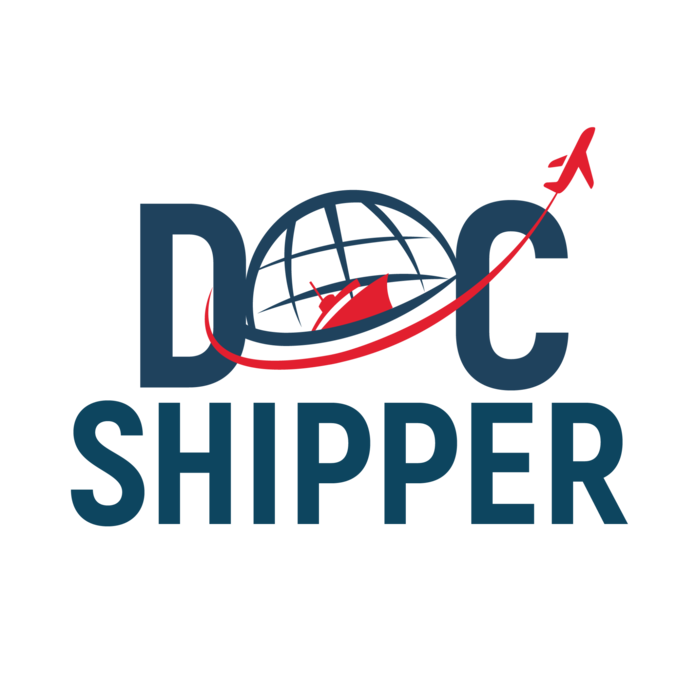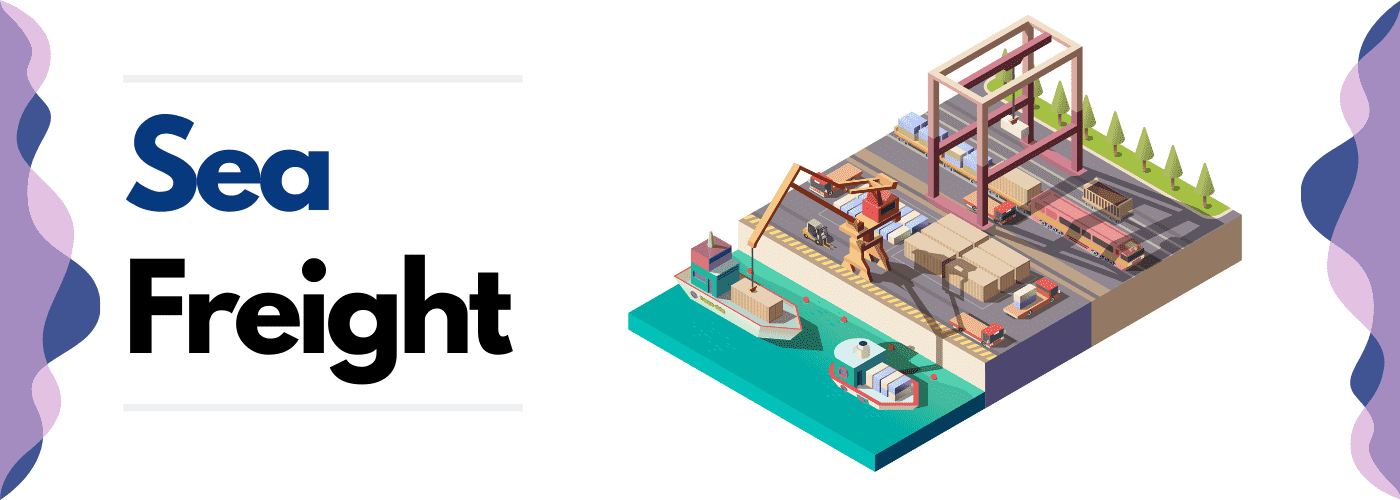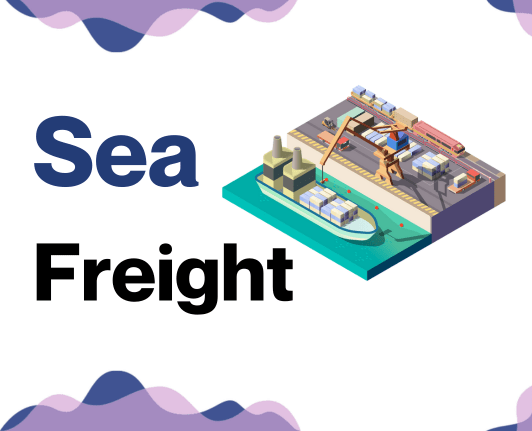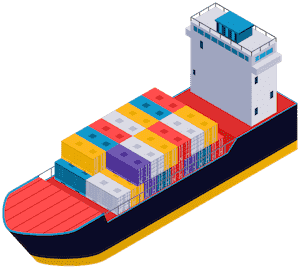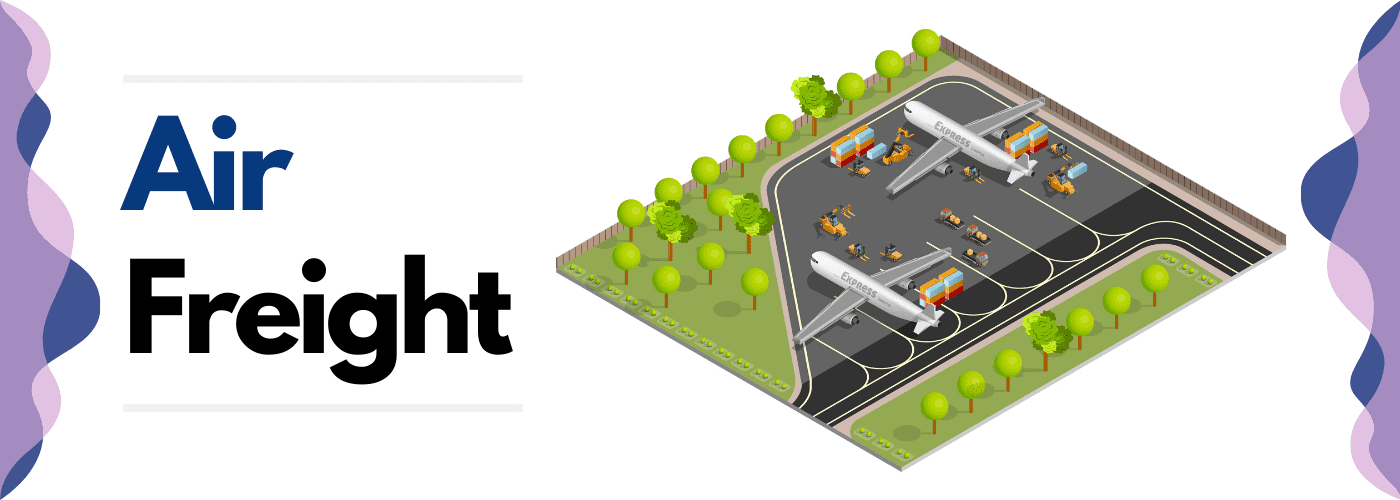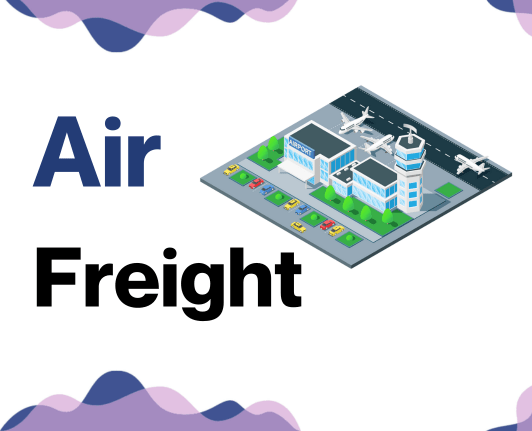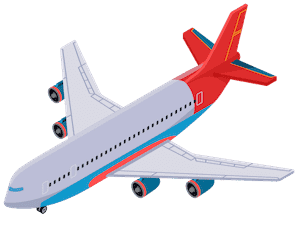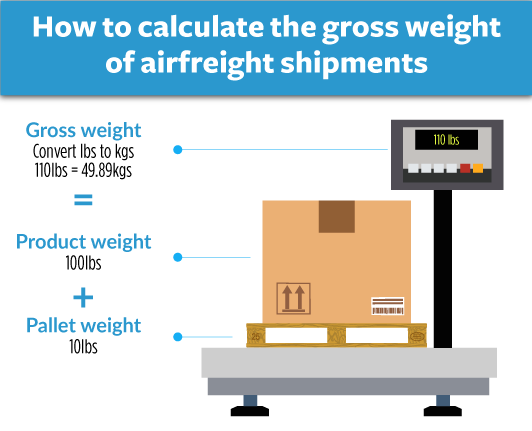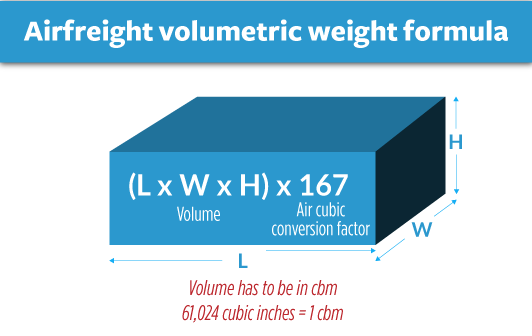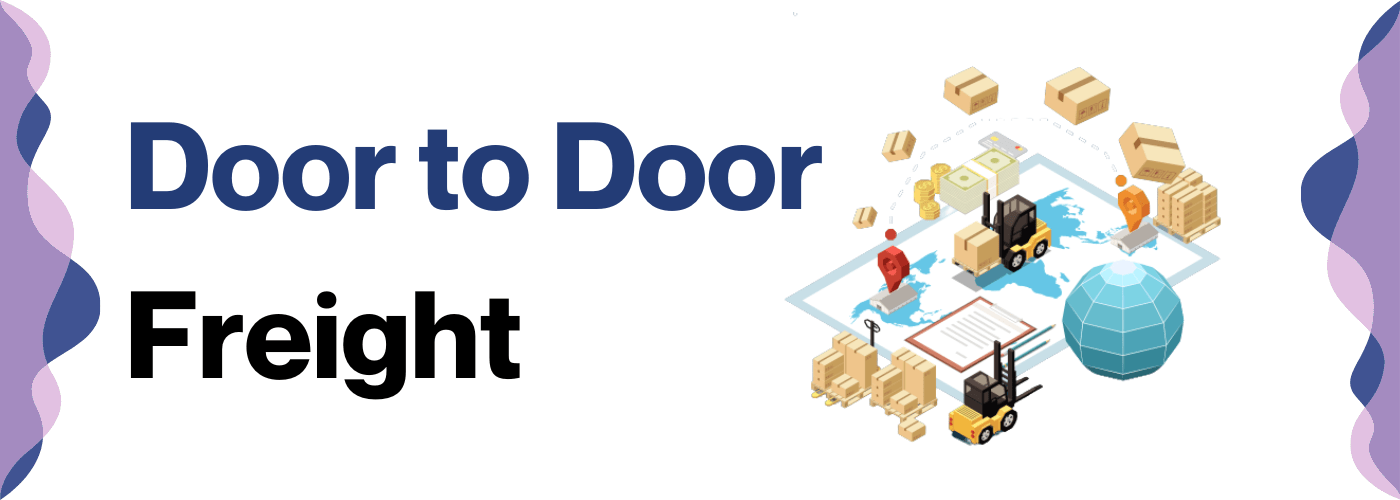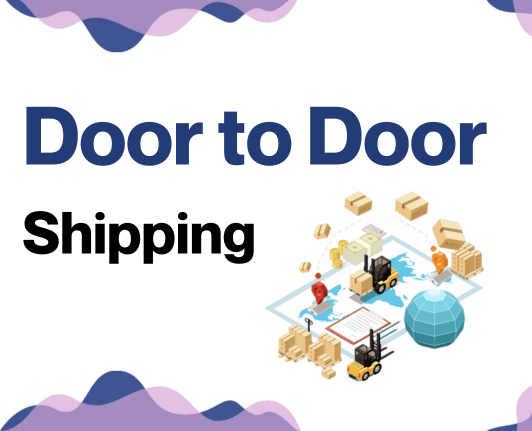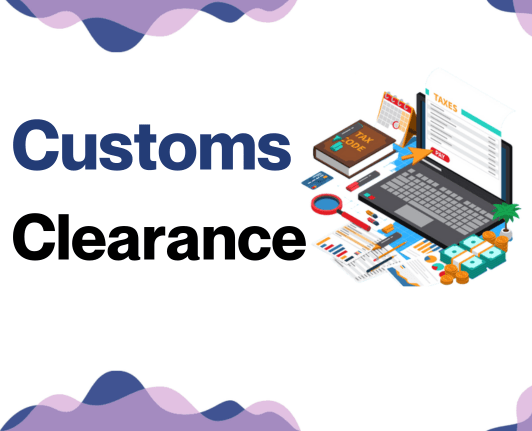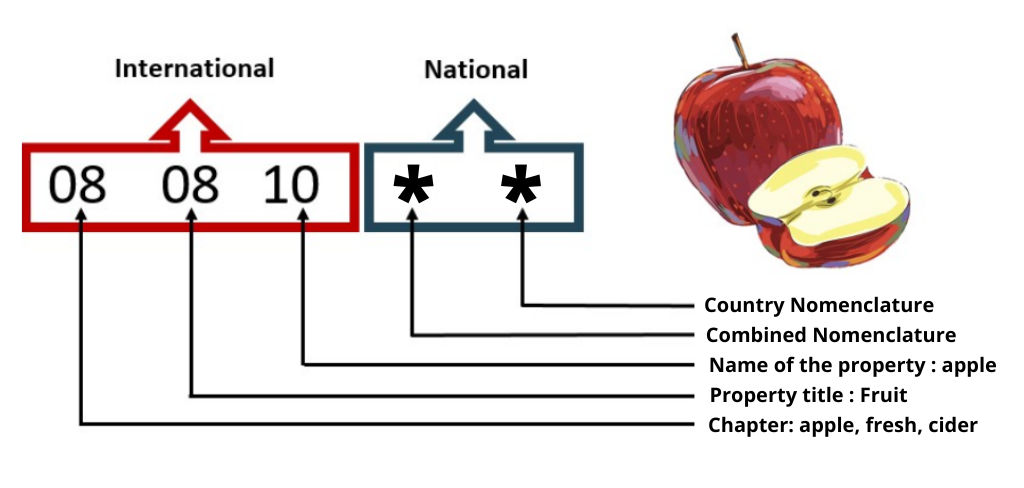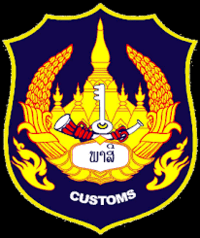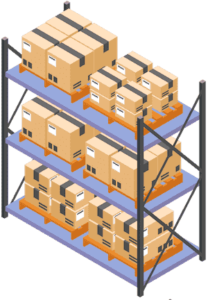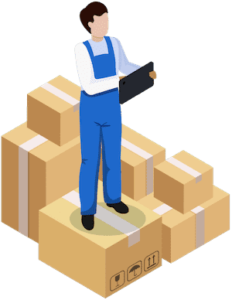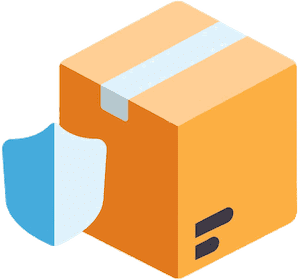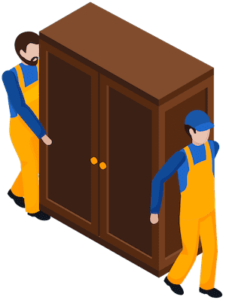You know what they say - the longer the route, the better the storytelling - but when it comes to shipping from the US to Laos, we know businesses want fewer anecdotes and more straightforward answers! Addressing common challenges such as dissecting complex rates, interpreting diverse transit times, and navigating intricate customs regulations can quickly become overwhelming.
This guide aims to break down these barriers and offer a clear path forward for your freight transportation needs. It provides a comprehensive overview of freight options, experienced advice on customs clearance, duties, taxes, and is designed to meet the demands of businesses seeking stress-free international shipping.
If the process still feels overwhelming, let DocShipper handle it for you! We are a trusted freight forwarder, dedicated to turning your shipping challenges into success stories. With us, every step of your journey from booking to delivery is in secure hands!
Table of Contents
ToggleWhich are the different modes of transportation between US and Laos?
Imagine your shipment on a relay race from the vast US straight to the heart of Southeast Asia, Laos. With oceans, multiple borders, and thousands of miles between, the baton pass isn't straightforward.
Air freight shines in speed for this long haul, while ocean freight offers space for heftier cargo. If time isn't pressing, multi-modal solutions cleverly tagging sea or air transport with road haulage could be your golden ticket.
Like choosing the best runner for each race leg, aligning your transport method with the precise challenge makes all the difference! So, let's explore your options further.
How can DocShipper help?
Unsure about shipping goods between the US and Laos? At DocShipper, we simplify it all, handling everything from transport organization to customs clearance. Enjoy our hassle-free service that makes international freight a breeze. Need an estimate or have a question? Contact our consultants for a free estimate within 24 hours. Let us ease your shipping worries!
DocShipper Tip: Sea freight might be the best solution for you if:
- You are shipping large volumes or bulky items, as sea freight offers the most space at a cost-effective rate.
- Your cargo doesn't have an urgent deadline, as sea freight typically has longer transit times compared to air or rail.
- Your shipping routes are between major ports, allowing you to leverage the extensive global network of sea shipping lanes.
Sea freight between US and Laos
The economic ties between the US and Laos are centuries old and constantly evolving. At the heart of this robust trade relationship is ocean shipping, connecting key American ports such as Los Angeles and Savannah with the burgeoning industrial centers in Vientiane, among others.
Despite slower transit times, sea freight remains the go-to solution for businesses given its unmatched cost-efficiency for heavy and large volume transportations.
Unfortunately, the shipping ecosystem between the US and Laos is filled with logistical potholes. An overwhelming number of businesses, big and small, find themselves grappling with intricate customs procedures, tedious documentation, and unpredictable shipping schedules. Yet, adaptation is possible.
In this guide, we've distilled practical insights to help you weather the storm, from best practices to specific recommendations tailored to shipping between these two countries. View this as your sea compass, set to steer you clear from common mistakes towards smoother sailing on your transpacific trade journeys. It's indeed the little details that make a big difference. Let's dive in.
Main shipping ports in US
Port of Los Angeles
Location and Volume: Located in San Pedro Bay, the Port of Los Angeles is the busiest container port in America, handling over 9.2 million TEUs annually.
Key Trading Partners and Strategic Importance: Its strategic importance lies in its accessibility to the trans-Pacific trade routes, with key trading partners including China, Japan, Vietnam, and South Korea.
Context for Businesses: If you're looking to significantly develop your trade links with Asia, the Port of Los Angeles is an essential addition to your logistics chain due to its volume of trade with these countries, and comprehensive rail and highway links for distribution throughout North America.
Port of Long Beach
Location and Volume: Situated in California, the Port of Long Beach ranks second in container volume among U.S. ports. It handled 7.8 million TEUs in 2023.
Key Trading Partners and Strategic Importance: The Port of Long Beach facilitates trade primarily with East Asian countries; its central location on the West Coast enhances its strategic significance.
Context for Businesses: If your business model relies on speed and efficiency, the port's extensive on-dock rail facilities and advanced cargo handling equipment could make it a viable option for your shipping needs.
Port of New York & New Jersey
Location and Volume: Located on the East Coast, the Port of New York and New Jersey is the third largest port in the US, handling over 7 million TEUs, annually.
Key Trading Partners and Strategic Importance: It serves as a critical hub for trade with Europe, Canada, Asia, and the Middle East.
Context for Businesses: Its massive market reach and specialized terminals could make this port an excellent choice if your aim is to develop versatile, wide-ranging shipping strategies.
Port of Savannah
Location and Volume: Located in Georgia, the Port of Savannah is the fourth busiest container port in the U.S., with a volume surpassing 4.9 million TEUs in 2023.
Key Trading Partners and Strategic Importance: The port maintains significant trading relations with China, Germany, and India.
Context for Businesses: If you're seeking to capitalize on a booming consumer market, the Port of Savannah's access to the Southeast and Midwest U.S. makes it ideal for your business.
Port of Houston
Location and Volume: Nestled in Texas, the Port of Houston - the fastest-growing container port in the U.S. - moved roughly 3.8 million TEUs in 2023.
Key Trading Partners and Strategic Importance: The trading partners of the Port of Houston range widely from Mexico, China, to Brazil.
Context for Businesses: The port's robust infrastructure and deepwater access makes it an excellent choice for businesses involved in the energy and petrochemical sectors.
Port of Seattle
Location and Volume: The Port of Seattle, in Washington, handled a shipping volume of about 3.4 million TEUs in 2023.
Key Trading Partners and Strategic Importance: Boasting robust trade ties with countries in Asia like China and Japan, the port plays a key role in trans-Pacific trade.
Context for Businesses: If you are looking to leverage Pacific Northwest's rich consumer markets and expand your Asian connections, the Port of Seattle with its modern facilities, wide-array of services and strategic location, could offer fruitful opportunities.
Main shipping ports in Laos
Port of Vientiane
Location and Volume: Situated along the Mekong River, providing seamless access to surrounding countries, the Port of Vientiane is a central hub for the land-locked nation of Laos. The shipping volume is available on request from the port authority.
Key Trading Partners and Strategic Importance: The Port of Vientiane is shaping to be a key player in the trade-relations between Laos and its main trading partners, including Thailand, Vietnam, and China. This strategic location contributes significantly to the Belt and Road Initiative.
Context for Businesses: If your business seeks to penetrate Southeast Asian markets, the Port of Vientiane is a crucial node in your logistical plan due to its strategic location and connections to major trade partners.
Port of Pakse
Location and Volume: The Port of Pakse is located at the confluence of Mekong and Xe Don rivers. Though not a significant player by international standards, the port supports an essential share of Laos' inland shipping.
Key Trading Partners and Strategic Importance: Pakse is strategically located with close proximity to Thailand, increasing trade opportunities, and fostering social and economic ties within the ASEAN region.
Context for Businesses: For businesses seeking to leverage Laos' unique geographical location, the Port of Pakse could prove essential given its role in regional shipping and obvious international market access.
Port of Savannakhet
Location and Volume: Port of Savannakhet is centrally positioned in southern Laos, and manages a significant proportion of the country’s cargo volume considering its land-locked status. The shipping volume details are available from the port authority.
Key Trading Partners and Strategic Importance: The port provides trade access to nearby countries such as Thailand, people's Republic of China, and the Socialist Republic of Vietnam. This gives it strategic importance in the international trade space.
Context for Businesses: If your business models involve commodity shipping or dry bulk goods, this port offers a viable shipping route due to its operational capabilities and geographical positioning.
Port of Luang Prabang
Location and Volume: The Port of Luang Prabang. is sited on Mekong River, providing unique access to neighboring countries. The shipping volume is available on request from the port authority.
Key Trading Partners and Strategic Importance: The port influences a significant volume of local trade, predominantly with China and Thailand while supporting Laos' greater economic ambition.
Context for Businesses: Businesses targeting China and Thailand, or looking to foster more effective trade relationships in the ASEAN region, will find Luang Prabang's port facilities advantageous.
Should I choose FCL or LCL when shipping between US and Laos?
Taking the plunge into the sea freight world between the US and Laos? This section dives into the two key options: Full Container Load (FCL) and Less than Container Load (LCL), often referred to as consolidation. Your choice here will influence your shipping costs, delivery times, and the overall efficiency of your freight operation. The devil is, indeed, in the details, so let's uncloak these shipping concepts, helping you to sail smoothly on this transoceanic journey. Ready to embark on this insightful voyage of discovery? Your tailored sea freight solution awaits!
LCL: Less than Container Load
Definition: LCL (Less than Container Load) shipping is a cost-effective method of transporting smaller freight volumes. In LCL freight, your cargo shares a container with goods from other shippers, instead of booking a full container.
When to Use: Opt for LCL shipping when your freight volumes are smaller, typically less than 13/14/15 Cubic Meters (CBM). This service offers flexibility as it fits your freight needs, especially when you have lower volumes to transport and not enough cargo to fill a full container.
Example: Imagine you own a boutique and need to import a small batch of artisanal products from Laos to the US. As the volume isn't sufficient to justify booking a full container, you'd use an LCL shipment. This way, your products share container space with other shippers' goods, keeping shipping costs at bay.
Cost Implications: Since you're only paying for the container space your freight occupies, LCL shipping can be cost-effective for smaller shipments. However, remember that the consolidation and deconsolidation process in LCL freight might add extra handling costs to your shipment. Ensure you consider all factors before making a shipping decision.
FCL: Full Container Load
Definition: FCL, or Full Container Load, refers to a mode of shipment where a whole container is utilized by a single shipper for the transportation of goods. In FCL shipping, the FCL container, whether a 20'ft or 40'ft, is filled with merchandise from the same owner.
When to Use: This shipping method is ideal in cases where your shipment is above 13, 14, or 15 CBM (cubic meters). It's chosen for its economy for high volume and extra safety since the container remains sealed from origin to destination, reducing the risk of damage during loading and unloading.
Example: Consider a manufacturer shipping large machinery from Boston to Vientiane. Given the size and weight of the cargo, it would be more cost-effective and safer to use FCL. The items would fit in a 20'ft or 40'ft FCL container and remain sealed from the US all the way to Laos.
Cost implications: An FCL shipping quote generally includes a flat-rate fee with prices setting based on the type and number of containers used. Although the initial outlay for the whole container might be high, the cost per unit shipped is often much lower compared to other methods, making it a wise choice for large volume shipments.
Unlock hassle-free shipping
Struggling with the choice between consolidation and a full container for your US to Laos shipments? DocShipper is here to ease the process. Our ocean freight experts assess your shipping volume, budget, and schedule to determine the best strategy for your cargo. We stand tall as a freight forwarder dedicated to transforming tedious cargo shipping into a convenient business task. Begin your shipping journey with us; request a free estimation now!
How long does sea freight take between US and Laos?
The average shipping time for sea freight from the US to Laos takes about 30 days. These transit times account for various factors, including the specific ports utilized, the weight of the shipment, and the nature of the goods being transported. For a personalized and precise quote, it's highly encouraged to liaise with a competent freight forwarder like DocShipper.
| US Port | Laos Port | Average Transit Time (days) |
| Port of Los Angeles | Port of Vientiane | 32 |
| Port of Long Beach | Port of Pakse | 27 |
| Port of New York & New Jersey | Port of Savannakhet | 36 |
| Port of Savannah | Port of Luang Prabang | 35 |
*Note: Laos, being a landlocked country, does not have seaports. Hence, all shipments to Laos will require additional handling and forwarding from another country's port.
How much does it cost to ship a container between US and Laos?
Shipping a container from the US to Laos isn't a one-price-fits-all endeavour; it's a complex calculation shaped by numerous factors. Ocean freight rates and overall shipping cost can be influenced by your Point of Loading and Destination, your chosen carrier, the nature of your goods, and the fickle dance of monthly market fluctuations. It's why we can't offer a precise rate straight off the bat, but rather a broad range per CBM.
However, fear not—as your shipping specialists, we individually quote on a case-by-case basis, ensuring you get the best bang for your buck. Lean on our expertise for a tailored, cost-effective solution to your shipping needs.
Special transportation services
Out of Gauge (OOG) Container
Definition: An OOG container is perfect for shipping out of gauge cargo that don't fit within the standard container dimensions, whether taller, wider, or longer.
Suitable for: Ideal for items that have irregular sizes, possibly involving machinery, industrial components, and construction equipment.
Examples: Examples of items to ship might include agricultural equipment, airplane parts, or oversized vehicles.
Why it might be the best choice for you: If your business deals with irregularly sized goods that require careful handling and secure transportation, OOG containers might be your perfect solution.
Break Bulk
Definition: Break bulk involves cargo that is loaded individually onto a vessel, unlike traditional container shipping. Each item is identified separately, often using cranes and other machinery.
Suitable for: It's best suited to large items that can't be broken down to smaller units like machinery, or loose cargo load that doesn't fit into containers.
Examples: Items like wind turbines, heavy machinery pieces, or construction equipment are all suitable for break bulk shipping.
Why it might be the best choice for you: If your business deals with large, indivisible cargo that doesn’t lend itself well to container shipping, then break bulk might be just what you need.
Dry Bulk
Definition: Dry bulk shipment involves large quantities of single, dry commodities being shipped in bulk carriers. It excludes goods loaded individually, packaged or in containers.
Suitable for: It's designed for commodities like coal, grain, or minerals that are shipped in large quantities and do not need packaging.
Examples: Iron ore, cement, or rice are often transported this way.
Why it might be the best choice for you: If your business regularly deals with the transport of mass produce, dry bulk shipping could be your cost-effective solution.
Roll-on/Roll-off (Ro-Ro)
Definition: Ro-Ro refers to the method of loading and unloading a ship where the cargo is driven on and off the ro-ro vessel on their own wheels or using a platform vehicle.
Suitable for: This method is apt for wheeled cargo like cars, trucks, semi-trailer trucks, trailers, and railroad cars.
Examples: Automobiles, heavy machinery, or motorbikes would be perfect for Ro-Ro shipping
Why it might be the best choice for you: If you're in the business of moving vehicles or heavy machinery that operates on wheels, Ro-Ro shipping offers a secure and efficient transport option.
Reefer Containers
Definition: Reefer containers are refrigerated containers used for shipping goods that need a controlled temperature during transport.
Suitable for: It's ideal for perishable goods such as fruits, vegetables, dairy products, and also medical supplies like drugs and vaccines.
Examples: Fresh seafood, delicate fruits, frozen meat are typical items shipped in Reefer Containers.
Why it might be the best choice for you: If your trade demands the transportation of temperature-sensitive goods, opting for reefer containers ensures your items stay fresh and protected from start to delivery.
Get in touch with DocShipper today - we can help you determine the best shipping method for your needs and provide a free quote in less than 24 hours.
DocShipper Tip: Air freight might be the best solution for you if:
- You are in a hurry or have a strict deadline requirement, as air freight offers the fastest transit times.
- Your cargo is less than 2 CBM (Cubic Meter), making it more suitable for smaller shipments.
- Your shipment needs to reach a destination that is not easily accessible by sea or rail, allowing you to tap into the extensive network of global airports.
Air freight between US and Laos
Air freight from the US to Laos offers a swift and reliable solution for your shipping needs - think of it like the express courier of the global trade world! It’s particularly chipper for small, high-value items - think jewelry, electronics or important documents.
However, here’s where some twirls and furls come in. More often than not, shippers overlook key aspects before air shipping. For instance, trouble brews when estimating the price of goods to ship - think about it as trying to cram a jumbo jet into a toy plane's hangar, it simply won’t fly! Many shippers use physical weight when they should be using volumetric weight (the space your goods occupy on the plane).
Also, unawareness of best practices can skyrocket your shipping costs, almost like taking a detour on the expressway – it’s longer and costlier. We'll clear these air pockets in this guide, helping you to direct your shipping away from turbulence!
Air Cargo vs Express Air Freight: How should I ship?
Puzzling over shipping options to Laos? Let's untangle the knot! Simply put, air cargo loads your goods onto a commercial airline with other freight, a little like sharing an Uber. Whereas express air freight provides a dedicated flight, think personal limo service for your cargo. We're about to deep-dive into the pros and cons, to help decide which is the champion for your business.
Should I choose Air Cargo between US and Laos?
Opting for air cargo between the US and Laos can be an effective choice, especially when your freight weighs 100/150 kg (220/330 lbs) or more. Renowned carriers like United Airlines and Lao Airlines offer reliable service with fixed schedules, though the transit times may be longer.
Despite the extra wait, the higher level of safety and the cost-effectiveness of air cargo might suit your budgetary needs perfectly. So, if you have considerable weight behind your shipment and value reliability, air cargo is an option worth exploring.
Should I choose Express Air Freight between US and Laos?
Express air freight, provided by giants like FedEx, UPS, or DHL, specializes in moving low volume shipments on dedicated cargo planes without passengers. This service is incredibly powerful for your business, especially when shipping less than 1 CBM or around 100/150 kg (220/330 lbs) of cargo between the US and Laos. By choosing express air freight, you'll benefit from a quicker transit time and real-time tracking. That means faster delivery, lesser handling, and higher transparency, meeting your business needs efficiently.
Main international airports in US
Los Angeles International Airport (LAX)
Cargo Volume: Los Angeles International Airport processes over 2 million metric tons of cargo annually.
Key Trading Partners: China, Japan, and Australia are key trading partners.
Strategic Importance: LAX is strategically located as a gateway to the Asia-Pacific region, ensuring fast and efficient transport of goods.
Notable Features: It hosts a fast-track customs facility for expedited cargo clearance and boasts a modern, high-capacity cargo terminal.
For Your Business: LAX provides timely, efficient access to key international markets, ideal for businesses requiring quick transit times.
Miami International Airport (MIA)
Cargo Volume: With an annual cargo volume of over 2.3 million metric tons, MIA ranks first in the US for international freight.
Key Trading Partners: Among its main trading partners are Latin American and Caribbean countries.
Strategic Importance: MIA offers the business advantage of being the closest US airport to Latin America, a major global economic powerhouse.
Notable Features: MIA features an extensive perishable cargo facility, a key factor for businesses dealing with temperature-sensitive goods.
For Your Business: This airport is ideal if your business focuses on trade with Latin America, or deals with perishable goods.
John F. Kennedy International Airport (JFK)
Cargo Volume: JFK handles about 1.5 million metric tons of cargo annually.
Key Trading Partners: Main trading partners include the European Union, Canada, and China.
Strategic Importance: JFK's location on the East Coast gives it strategic importance for transatlantic trade.
Notable Features: Features include specialist facilities for valuable freight like textiles, pharmaceuticals, and electronics.
For Your Business: Its strong connections with Europe make JFK a smart choice for businesses with strong trading ties to this region.
Chicago O’Hare International Airport (ORD)
Cargo Volume: ORD processes more than 1.8 million metric tons of cargo annually.
Key Trading Partners: ORD connects with major markets in Europe, Asia, and South America.
Strategic Importance: Its central location makes it a hub for both domestic and international shipments.
Notable Features: ORD has a special freight handling facility for oversized cargo, along with a world-class infrastructure for efficient loading and offloading.
For Your Business: If you're dealing with oversized cargo or prefer a well-connected central hub, ORD serves as an excellent choice.
Hartsfield–Jackson Atlanta International Airport (ATL)
Cargo Volume: ATL handles over 2.7 million metric tons of cargo per year.
Key Trading Partners: This airport serves key markets around the globe including Europe, Asia, and Africa.
Strategic Importance: Known as the world's busiest airport by passenger traffic, it also serves as a key hub for domestic and international cargo shipments.
Notable Features: ATL features a state-of-the-art perishable cargo complex and advanced animal handling facilities.
For Your Business: ATL's extensive connectivity and specialized facilities make it a versatile choice for various business shipping demands.
Main international airports in Laos
Wattay International Airport
Cargo Volume: Managing a significant percentage of the country's air cargo, Wattay International's cargo volume is on an increasing trend year by year.
Key Trading Partners: Major trading partners include Thailand, Vietnam, and China, supplemented by several other Asian and European nations.
Strategic Importance: Located in the capital city, Vientiane, it serves as the country's main air transport hub. Its strategic location makes it a vital gateway, central to Laos' air freight operations.
Notable Features: Wattay International accommodates both full cargo aircraft and belly cargo in passenger aircraft. Its facilities are equipped to handle various cargo commodities, including perishables and hazardous materials.
For Your Business: If your major markets are within the Asia region and Europe, incorporating Wattay into your transport strategy may provide cost-effective and efficient shipping routes.
Luang Prabang International Airport
Cargo Volume: Even though smaller than Wattay, Luang Prabang also handles a substantial amount of cargo, particularly during the tourism season.
Key Trading Partners: Mainly includes Thailand, Vietnam, and Cambodia besides shipping goods to international destinations through connections with major airlines.
Strategic Importance: Its location in the UNESCO listed city of Luang Prabang boosts its importance, especially for goods linked to tourism and culture-based industries.
Notable Features: Luang Prabang International is well-equipped to handle diversified freight, from general to special cargo.
For Your Business: If you are in an industry like arts, handicrafts or tourism-related goods, this airport can be an ideal choice for your air cargo needs, helping you tap into both local and international markets.
Pakse International Airport
Cargo Volume: This facility conducts a smaller volume of cargo activities compared to the other two airports, however, it is still imperative in the southern region of the country.
Key Trading Partners: Most frequently trades with Thailand, Cambodia, and Vietnam.
Strategic Importance: Situated near the borders of both Thailand and Cambodia, its geographical position gives an added advantage, opening up additional routes for international trade.
Notable Features: Pakse is capable of handling regular freight shipments and has strong capacities for dealing with perishable goods.
For Your Business: If your business deals with perishable commodities or is looking to expand in the regions closer to Thailand and Cambodia, Pakse International Airport should be part of your strategic planning. Its location and trade links may provide you with more competitive transport options.
How long does air freight take between US and Laos?
Expect air freight shipping between the US and Laos to average between 5-10 days. Please note that these transit times are approximate and may vary depending on variables such as departure and arrival airports, weight and volume of goods, and their nature and category. For specific and accurate time frames, engaging services like DocShipper guarantees precise estimates that reflect the unique aspects of your shipment.
How much does it cost to ship a parcel between US and Laos with air freight?
On average, air freight rates between the US and Laos range widely from $3 to $10 per kg. However, it's essential to know that these rates are not fixed. They fluctuate depending on factors such as the distance between departure and arrival airports, package dimensions, weight, and the nature of the goods.
Rest assured, our experienced team extensively evaluates these factors to provide the most competitive rates – each quote tailored to your specific shipping needs. Piece of mind doesn't need to be expensive; let us handle the complexity and details for you. Contact us and receive a free quote within 24 hours!
What is the difference between volumetric and gross weight?
Gross weight refers to the total weight of your shipment, including packaging and pallets. On the other hand, volumetric weight arises by factoring the dimensions (width, length, height) of your package into the calculation, it's the 'space' your cargo occupies.
For Air Cargo, the volumetric weight is formulated using the following equation: Length (in cm) x Width (in cm) x Height (in cm) divided by 6,000. The result is your volumetric weight in kilograms. For Express Air Freight, the divisor changes from 6,000 to 5,000, essentially resulting in a higher volumetric weight when space is a vital commodity.
Let's illustrate this with an example: You have a shipment that physically weighs 40kg (approximately 88 lbs) with dimensions 100 x 60 x 60 cm. In the case of Air Cargo, its volumetric weight equals 100 x 60 x 60 / 6,000 equating to 60kg (approximately 132 lbs). For Express Air Freight, the computation is 100 x 60 x 60 / 5,000, yielding 72 kg (approximately 158 lbs).
So, why do these calculations matter? Freight charges are primarily determined by the higher value between the actual gross weight and the volumetric weight. Therefore, understanding these calculations allows for more accurate cost forecasts in your shipping budget.
DocShipper tip: Door to Door might be the best solution for you if:
- You value convenience and want a seamless shipping process, as door-to-door takes care of every step from pickup to delivery.
- You prefer a single point of contact, as door-to-door services typically provide a dedicated agent to handle all aspects of the shipment.
- You want to minimize the handling of your goods, reducing the risk of damage or loss, as door-to-door minimizes transitions between different modes of transport.
Door to door between US and Laos
Unraveling the maze of international shipping, door-to-door service is your one-stop solution, offering comprehensive end to end delivery from the U.S. to Laos. It simplifies logistics, saves you customs headaches, and ensures a smooth shipment journey. Intrigued? Stick around as we delve deep into the merits of this all-inclusive shipping approach. So, without further ado, let's dive in!
Overview – Door to Door
Shipping between the US and Laos can be complicated for businesses, full of challenges from paperwork to customs clearance. Yet, door to door shipping efficiently handles these complexities, becoming your ultimate stress-free logistics solution.
By choosing this popular service - trusted by DocShipper’s clients worldwide - you're circumventing transport coordination, dealing with customs, or worrying about deadlines. Despite potentially slightly higher costs, the convenience and time-savings are undeniable.
To maximize your business's efficiency, consider how this comprehensive solution can be the key to unlocking seamless international shipping.
Why should I use a Door to Door service between US and Laos?
Ever tried juggling flaming torches while simultaneously solving a Rubik's cube? No? Well, congratulations, you've just visualized what logistics can feel like. But breathe easy, that's exactly what Door to Door services are here to sort out.
1. Stress Busters: It's not called 'Door to Door' for nothing! Say goodbye to the tangled web of tracking multiple logistic partners. This service streamlines your shipping process by handling pickups and deliveries, making door-to-door transport a breeze.
2. Time Savers: For your urgent shipments, every tick of the clock is gold dust. Forget those nerve-wracking waits for transfer of shipments between different transportation. Door to Door services can ensure your goods reach from the US to Laos, swiftly and smoothly.
3. Specialized Care: Have unique cargo? Fear not. Door to Door service comes equipped with ways to handle complex or delicate cargo. It treats your special shipments with the TLC (Tender, Love, and Care) they deserve.
4. Convenience Kings: Don't feel like dealing with the nitty-gritty of trucking? This service has your back all the way till the final destination. With customs, paperwork, and clearance handled, it's tailored to take the weight off your shoulders.
5. Dependable Delivery: Let's face it - missing a delivery is a universal bummer. The door-to-door service can eliminate this pitfall, ensuring your cargo arrives right where you need it.
And that's the beauty of a Door to Door service. It's as close as you get to having a personal assistant for your freight - without the pesky interview process!
DocShipper – Door to Door specialist between US and Laos
Experience stress-free, door-to-door shipping from the US to Laos with DocShipper. Leveraging our vast expertise and proficiency, we offer a seamless A-Z logistics service, managing everything from packing and transport to customs clearance across all shipping methods.
You'll also be privy to personalized assistance from a dedicated Account Executive. Reach out for a free estimate within 24 hours, or opt for a complimentary consultation with our experts. Your global logistics, simplified. Trust DocShipper - Your freight is our business!
Customs clearance in Laos for goods imported from US
Navigating customs clearance – a required process to transport goods across international borders – in Laos for your U.S-imported goods can feel like a winding maze. The road is strewn with potential complications like unforeseen fees, licenses, quotas, and taxes. One misstep could risk having your precious cargo held up at the border. A grasp on customs duties and licenses is your compass here.
But fear not, we'll be your guide in the daunting customs landscape. DocShipper is always ready to steer you right, assisting with any goods, anytime, anywhere globally. Need a cost estimate for your project? Contact our team with your goods' origin, value, and HS Code. These essential details will pave the way for accurate budget planning. Hang tight, we'll go deeper into this labyrinth in the coming sections.
How to calculate duties & taxes when importing from US to Laos?
Navigating through the landscape of duties and taxes can seem pretty daunting, especially for the uninitiated. The key to estimating your customs duties lies in a certain algebra sum that involves a few pivotal factors.
In this equation, the products' country of origin (where they were manufactured or produced), the unique Harmonized System (HS) Code assigned to them, the Customs Value of those items, the Applicable Tariff Rate as per the destination country, and other intermittent taxes and fees, all are integral variables.
Now, let's tackle it step by step, starting with pin-pointing the country where your goods took birth because it holds significant sway over the impending customs duties.
Step 1 - Identify the Country of Origin
Understanding your goods' Country of Origin is the cornerstone to navigating international trade specifically when importing from the US to Laos. Here are five key reasons:
1. Trade agreements: The US-Laos Bilateral Trade Agreement provides significant import-duty reductions or exemptions on certain goods. Knowing your goods' origin can help you tap into these benefits.
2. Tariff classifications: The assigned Harmonized System (HS) codes for your goods can vary depending on the country of origin, affecting the customs duty payable.
3. Import restrictions: Certain items from specific countries may be subject to restrictions or prohibitions. Ensure your goods are compliant with Laos' local laws.
4. Anti-dumping measures: To fend off unfair competition, Laos sometimes imposes additional tariffs on goods that seem too cheap, so the origin country counts.
5. Documentation: Customs may request different paperwork based on the origin country, including certificates of origin.
Take the time to identify your products' actual Country of Origin. It might seem obvious, but corners cut here can lead to increased costs or delays later. Factoring this detail in will help your business run more smoothly and could also save you a lot of money.
Step 2 - Find the HS Code of your product
Understanding the Harmonized System (HS) code for your product is instrumental in smooth cross-border transactions. Essentially, the HS code is a standardized numerical method of classifying traded products. It is used by customs authorities around the world to identify products for the purpose of levying duties and taxes.
If you're wondering how to find this crucial code, often your supplier will have the answers. They're frequently well versed in the ins and outs of the products they deal with, including pertinent regulations and classifications such as the HS code.
However, should that route turn out fruitless, don't worry. We've got you covered with an easy step by step process to find it on your own. Your first step would be to visit Harmonized Tariff Schedule, which is an HS lookup tool.
When you arrive at the site, the process is quite straightforward. Simply enter the name of your product into the search bar. From there, you'll want to look at the 'Heading/Subheading' column. This is where you'll find your HS code.
At this juncture, it's pertinent to highlight the importance of accuracy when choosing the HS code for your product. A mistake could not only lead to delays in delivery, but might also result in fines. Therefore, please ensure that you're as precise as possible in your search and eventual selection.
Here's an infographic showing you how to read an HS code.
Step 3 - Calculate the Customs Value
Understanding the concept of 'Customs Value' can be quite a challenge, but it's a vital part of international shipping. It's different from the product value - that's just the bare cost of your goods. The Customs Value, specifically in Laos when importing from the US, incorporates more elements.
It's actually the CIF value, which includes the cost of the goods, international shipping charges, and insurance premium.
So, if your goods are worth $10000, you pay $2000 for shipping, and $500 for insurance, your Customs Value becomes $12500.
Here, every dollar matters in defining your duties and taxes. Keeping this in mind will allow you to plan your shipping budget more accurately, ensuring smoother operations for your business.
Step 4 - Figure out the applicable Import Tariff
An import tariff is a tax imposed by a country on goods bought from abroad, and it varies depending on the nature of the good and the trade agreements between the countries involved. Laos uses the Harmonized System (HS) to categorize imported goods.
To find the correct tariff for your goods, follow these steps:
1. Visit the Laos Ministry of Finance website, which provides information on tax rates for imported goods.
2. Locate the HS code for your product. For instance, let's use 9403.60.80, which stands for wooden furniture.
3. Enter the HS code into the search function to find the relevant tariff rate. Suppose the rate is 10%.
Next, to compute the import duties, the Customs Value (Cost, Insurance, and Freight (CIF) value) of the goods is considered. Suppose the CIF for the wooden furniture you're importing is $10,000.
Import Duty = Customs Value x Tariff Rate
= $10,000 x 10%
= $1,000
So, the import duty payable would be $1,000. It's crucial to correctly classify your goods using the right HS code to avoid discrepancies in tariff calculations and potential penalties. As a freight forwarder, we can help you navigate through this process step by step, making sure you're up-to-date with the relevant procedures and regulations for a smooth and efficient shipment.
Step 5 - Consider other Import Duties and Taxes
Import duties can be more than just the standard tariff. Depending upon a product's origin and nature, there might be additional charges.
Take, for instance, excise duties. These are taxes levied on specific goods like alcohol or fuel. If you're importing craft beers to Laos, excise duty may substantially increase your total import cost.
Then, there are anti-dumping taxes. If goods are sold far below their normal value - a practice called 'dumping' - the importing country might impose anti-dumping taxes to protect its domestic industry. For example, if a US manufacturer dumped T-shirts in Laos at cheap prices, hurting local producers, Laos could impose a hefty anti-dumping tax.
Lastly, don't forget about the VAT rate. In Laos, it's set at 10%, applicable on CIF value (Cost, Insurance, Freight) plus duties paid. Here's the simplified formula: VAT to pay = (CIF + Duties) x 10%.
Keep in mind, these tax rates are just examples and may not reflect current rates. Always consult with a local customs broker or a trade professional to get accurate, up-to-date information.
Understanding and budgeting for these potential costs is vital to avoid unexpected expenses and ensure a smooth import process. You're not just moving goods; you're building a venture.
Step 6 - Calculate the Customs Duties
Calculating customs duties in Laos for your US-imported goods relies on a formula that takes into account your goods' customs value, any value-added tax (VAT), and, in some cases, anti-dumping taxes. If VAT isn't applicable for your shipment, duties are calculated by simply multiplying the rate by the goods' customs value (e.g., a customs value of $10,000 and 5% customs duty would result in $500 to pay).
However, if VAT is relevant, it is applied after duties. For instance, if the same goods are subject to 10% VAT, the customs duty and VAT combined would equate to $600.
If additional taxes such as anti-dumping or Excise Duty apply, these are calculated in the same manner: on top of the customs value and existing duties and taxes, making the final bill $650 for a 5% Excise Duty.
Knowing how these are calculated is essential to understand the associated costs of your shipment. However, navigating this alone can be tricky. Custom clearance can be a breeze with DocShipper's services. We ensure you pay what's due, nothing more. Relieve yourself from the perplexing duties computation process and get a free quote from us within 24 hours. Ease your shipping experience worldwide with DocShipper.
Does DocShipper charge customs fees?
DocShipper, being a customs broker in the US and Laos, doesn't levy customs duties. Remember, what we charge are customs clearance fees, which are different from the customs duties and taxes that you pay directly to the government.
To ensure transparency, we provide documents from the customs office showing exactly what you've paid them. It's just like when you get a receipt after shopping - the store gets your payment for purchased items, while the sales tax goes to the state. Your pocket doesn’t feel extra weight, and you get proof of what's paid where.
Contact Details for Customs Authorities
Laos Customs
Official name: Laos Customs Department
Official website: https://www.mof.gov.la/index.php/en/custom-department/
Required documents for customs clearance
Cracking the code of customs documents like the Bill of Lading, Packing List, and Documents of conformity (CE standard) can be tricky. Don't fret! Stay tuned as we unlock what these documents are all about and their role in ensuring a smooth shipping process.
Bill of Lading
Navigating the customs journey from the US to Laos? The Bill of Lading (BoL) is your best friend. It's like a passport for your goods, marking the crucial moment ownership shifts from seller to buyer. Be it sea, air, or land—no transit is complete without a BoL. Consider going digital with an Electronic Release, also known as 'Telex'. Trading in the cumbersome paperwork for a swift email? That's a weight off your shoulders and a speed up for clearance times. And, for our high-fliers using air freight, switch BoL with an Air Waybill (AWB). Quick tip though—always double-check recipient details to ward off delays. So remember, keep your paperwork tight and your transit times will be right. Enjoy smooth sailing (or flying) from the USA to Laos.
Packing List
Shipping from the US to Laos? The Packing List is your unsung hero, your safety net. As the shipper, you're in charge of this crucial document. Its accuracy is paramount as it offers detailed information about your goods – from the exact quantity, weight, to the packaging material. Imagine a shipment of 200 handmade vases, packed in five sturdy wooden crates. Your Packing List is the identification tag that tells customs officers exactly what's inside each crate. This ensures smooth sailing – or flying – for both sea and air freights. Missing or inaccurate Packing Lists? Your goods could face long delays or even rejection at the border. So, whether you're shipping a single palette or an entire container, remember: a meticulously detailed Packing List is your ticket to a streamlined shipping experience.
Commercial Invoice
Getting your Commercial Invoice right is the key to a smooth customs clearance process when shipping from the US to Laos. This document should have critical information like goods description, their Harmonized System (HS) codes, invoice number, and total value. A precise, accurate invoice helps avoid costly delays at customs.
For example, imagine you're shipping machinery parts. Your invoice should clearly state the part's name and relevant HS code, instead of a vague term like machine parts. Matching invoice details with those on your Bill of Lading can save you big headaches. Keep it consistent!
So, ensuring your Commercial Invoice is carefully and correctly filled out empowers you to expedite your shipping process and avoid unnecessary mishaps—your ticket to smoother transits and happier customers.
Certificate of Origin
As a business shipping goods from the US to Laos, obtaining a Certificate of Origin can simplify your international shipping journey. This document verifies that the goods you're exporting were indeed manufactured in the US. For instance, a consignment of toys labeled Made in USA requires a Certificate of Origin to validate the claim. Why does this matter? Well, preferential customs duty rates! Yes, Laos may offer lower import duty on goods from specific nations, including the US. That means you could potentially save on shipping costs. So, remember to include that Certificate of Origin. It's more than just a piece of paper—it's your ticket to potentially smoother and cheaper freight forwarding!
Get Started with DocShipper
Navigating the complexities of US-Laos customs clearance can be daunting. Fear not, with DocShipper at your service, we'll streamline the entire process, so you don't have to worry about the details. Ready for stress-free shipping? Contact us for a free, no-obligation quote. Expect a personalized and competitive offer within 24 hours. Let us turn your customs challenges into seamless transactions today!
Prohibited and Restricted items when importing into Laos
Before diving into Laos's import world, it's essential to know what items are no-gos. This can be daunting, with extensive lists and regulations to understand. It's crucial to avoid penalties, lost shipments, or rejected entry. This guide will clarify Laos's prohibited and restricted items to make your import journey easier.
Restricted Products
- Pharmaceuticals: Before you think about shipping pharmaceuticals to Laos, you need to secure a Pharmaceutical Import License. This can be obtained from the Food and Drug Department Ministry of Health Laos.
- Weapons and Ammunition: If you're considering shipping weapons and ammo, be aware you'll need a special Weapons Import License. You can get it at the Ministry of National Defense of Laos.
- Radioactive substances: Planning on shipping radioactive substances? Then you're going to need a Radioactive Materials Import License from the Ministry of Science and Technology, Laos.
- Live animals and Animal products: If your shipment includes live animals or animal products, you need the Animal Health Certificate. To get it, head over to the Department of Livestock and Fisheries.
- Alcohol and Tobacco: For shipping alcohol or tobacco to Laos, there's an Alcohol and Tobacco Import License you have to apply for at the Ministry of Industry and Commerce, Laos.
- Precious metals and stones: If you're considering shipping precious metals or stones, remember to obtain the Precious Metals and Stones Import Permit from the Ministry of Energy and Mines, Laos.
- Cultural assets and artifacts: shipping Laos' cultural heritage? Submit your application for a Special Cultural Artifacts Export License at the Ministry of Information, Culture and Tourism.
Always remember to review any additional shipping requirements and duties under the respective licenses or permits at the official websites. Regulations can change, so make sure to stay updated. If in doubt, seeking professional advice is a good course of action.
Prohibited products
- Narcotics and psychotropic substances
- Pornographic materials
- Counterfeit currency and goods
- Explosive materials and fireworks without permission
- Toxic chemicals
- Radioactive substances
- Endangered species and their byproducts without CITES permit
- Immoral items or those that can harm national culture and tradition
- Live Fish (non-aquarium)
- Any publications, print, photographs that are against Laos government and/or public morality.
- Rough Precious stones and Semi-Precious stones.
- Uncooked edible meats.
- Animals, Plants, or other Organisms (alive or dead) which are liable to cause harm to people or the environment upon arrival.
Are there any trade agreements between US and Laos
As of now, there are no established Free Trade Agreements (FTAs) or Economic Partnership Agreements (EPAs) between the US and Laos. However, both countries are engaging in ongoing economic dialogues, showing signs of a promising trading future.
For instance, Laos' recent infrastructure developments, such as the China-Laos railway, could open new avenues for trade. As you seek to channel your business's shipping needs strategically, consider these evolving dynamics - they could foster more efficient and cost-effective shipping routes in the near future.
US - Laos trade and economic relationship
Trade between the US and Laos dates back to the restoration of diplomatic relations in 1992. Starting with negligible trade volumes, this economic rapport grew over the years to reach an impressive 283.14 million in goods exchanged in 2023. Key sectors facilitating this cross-trade include apparel, manufactured goods, and precious stones.
The US primarily exports vehicles, machinery, and soybeans to Laos, accounting for $39.6 million in 2023 alone. Investment-wise, the US has predominantly directed funds into the mining industry and retail sectors in Laos. While trade history may be brief, it's an evolving relationship, with recent years marking a notable rise in investments and in the sheer diversity of commodities traded—it's a landscape continuously paving the way for more opportunities.
Your Next Step with DocShipper
Overwhelmed by the complicated logistics of shipping goods between the US and Laos? Rest easy! DocShipper's team of experts is at your service. We handle everything - transport, customs, administration, and more - so you don't have to. Take the guesswork out of shipping. Contact us today to elevate your business to new international heights!
Additional logistics services
Uncover more about our comprehensive services, beyond freight. From supply chain management to reliable warehousing, DocShipper is your all-in-one logistics solution, simplifying global commerce for you.
Warehousing and storage
Cracking the code for dependable warehousing in Laos? It can be tough. Tailored conditions, like temperature control for perishables, are crucial. Imagine the heat spoiling a warehouse full of chocolates! To prevent such mishaps, explore more on our warehousing page.
Packaging and repackaging
When shipping goods from the US to Laos, correct packaging is instrumental. Whether it's electronics, apparels, or fragile goods, proper packing ensures safety, and repackaging minimizes shipping costs. With a reliable agent like DocShipper handling your cargo, you're assured of tailored packaging solutions fitting the bill. Picture this: a ceramic haggling with a bumpy ride in an ocean freight - meticulous packing is the survival key. Explore more on our dedicated page: Freight Packaging.
Cargo insurance
Cargo insurance goes beyond your typical fire insurance, acting like a safety net for your goods in transit. Let's say, your shipment faces unforeseen issues - theft, water damage, perhaps? That’s where cargo insurance steps in, minimizing your financial strain. An absolute must for risk mitigation in any shipping journey, unlike the standard cover which won't foot the bill. Get all fine prints at Cargo Insurance.
Supplier Management (Sourcing)
Looking to source and manufacture in Asia or East Europe? At DocShipper, we've got you covered. From locating the perfect suppliers to overseeing the entire procurement process, we help you conquer language barriers and guide you through every step. It's like having a personal translator and sourcing wizard in one. More info on our dedicated page: Sourcing services.
Personal effects shipping
Moving personal belongings from the US to Laos? Whether it's a grandma's china set or oversized furniture, trust in our specialist team who handle with upmost care and flexibility. Recall the valued piano we safely delivered to Vientiane? Your precious items are in experienced hands. Discover more at our dedicated page: Shipping Personal Belongings.
Quality Control
Quality inspections can make or break your US-Laos shipments. They ensure your products meet the necessary standards before they hit the long haul. Imagine shipping a batch of machinery, only to find out onsite in Laos that they're faulty. Headaches, right? Our Quality Control service eliminates such nightmares, guaranteeing your goods are ready for the journey. More info on our dedicated page: Quality Inspection.
Product compliance services
Ensuring goods meet all necessary regulations is vital for smooth shipments. With our Product Compliance Services, we run foolproof lab tests to certify your goods' compliance. It's like having a backstage pass at customs, avoiding possible delays and additional costs. Imagine shipping a batch of electronics only to find they don't meet destination's standards! Don't risk it; get certainty with our specialized service. More info on our dedicated page: Product Compliance Services.
FAQ | For 1st-time importers between US and Laos
What is the necessary paperwork during shipping between US and Laos?
During transportation from the US to Laos, we directly manage the requisite bill of lading if you opt for sea freight, or the airway bill for air freight. In addition, you're required to supply us with the packing list and commercial invoice. These are essentials for shipping across borders. Be aware that depending on the nature of your goods, there may be further necessary documents - like a Material Safety Data Sheet (MSDS) or specific certifications. Ensuring all relevant paperwork is in order is crucial to facilitate a smooth, hassle-free shipping process.
Do I need a customs broker while importing in Laos?
Absolutely, employing a customs broker is a prudent choice when importing to Laos due to the intricate procedures and necessary documents involved in interactions with customs authorities. As a shipping forwarder, we at DocShipper offer representation for your cargo during its customs clearance process. Utilizing our services can vastly simplify your import process and give peace of mind, knowing that your shipment is in experienced hands. With us, complexities about customs are no longer your concerns, allowing you to focus on what you do best - managing your business.
Can air freight be cheaper than sea freight between US and Laos?
While it's tough to provide a blanket statement on whether air freight is cheaper than sea freight, several factors play a part, such as route, weight, and volume. Generally, if your cargo is less than 1.5 Cubic Meters or 300 kg (660 lbs), it might be cost-effective to consider air freight between the US and Laos. But rest assured, as your trusted logistics partner at DocShipper, we'll ensure that you always get the most competitive pricing option tailored specifically to your needs.
Do I need to pay insurance while importing my goods to Laos?
Absolutely, insurance isn't a compulsory requirement when importing goods to Laos, or indeed to any destination. At DocShipper, we strongly advocate for the protection of your valuable shipments against potential incidents such as damage, loss, or theft. Although not obligatory, insuring your goods provides an extra layer of financial security and peace of mind in the unpredictable world of freight forwarding. We want your shipping experience to be as risk-free as possible, hence recommending freight insurance.
What is the cheapest way to ship to Laos from US?
For shipping from the US to Laos, sea freight is usually the most cost-effective option, particularly for large or heavy items. This is due to the significant geographical distance between the two countries. However, it also tends to take longer than air freight. If time is a critical factor, we might suggest a combination of sea and air freight to balance cost and speed. Please note that prices can vary based on many factors, including the type and volume of your goods. Contact us for a tailored quote to meet your specific needs.
EXW, FOB, or CIF?
The best choice between EXW, FOB, or CIF largely depends on your relationship with your supplier. Often, suppliers sell under EXW or FOB terms, which cover charges up to their factory door or the origin terminal, respectively. However, keep in mind that your supplier may not be a logistics expert, and it's usually more efficient to let a dedicated agents like us at DocShipper handle the international freight logistics and destination processes. Regardless of your supplier's preferred terms, we offer comprehensive door-to-door services to meet your specific needs.
Goods have arrived at my port in Laos, how do I get them delivered to the final destination?
By using we, DocShipper, under CIF/CFR incoterms, you're responsible for hiring a customs broker or freight forwarder to help with cargo clearances at the terminal and ensure the delivery to final destination. If you'd prefer avoidance of this process, you can opt for our DAP incoterms services, where we'll manage everything for you. Please confirm these details with your dedicated account executive.
Does your quotation include all cost?
Absolutely, our quotations are comprehensive and include all costs, excluding only the destination duties and taxes. To prevent unwelcome surprises, we ensure transparency in our fees. Should you want an estimate for duties and taxes at your destination, feel free to discuss this with your dedicated account executive.
